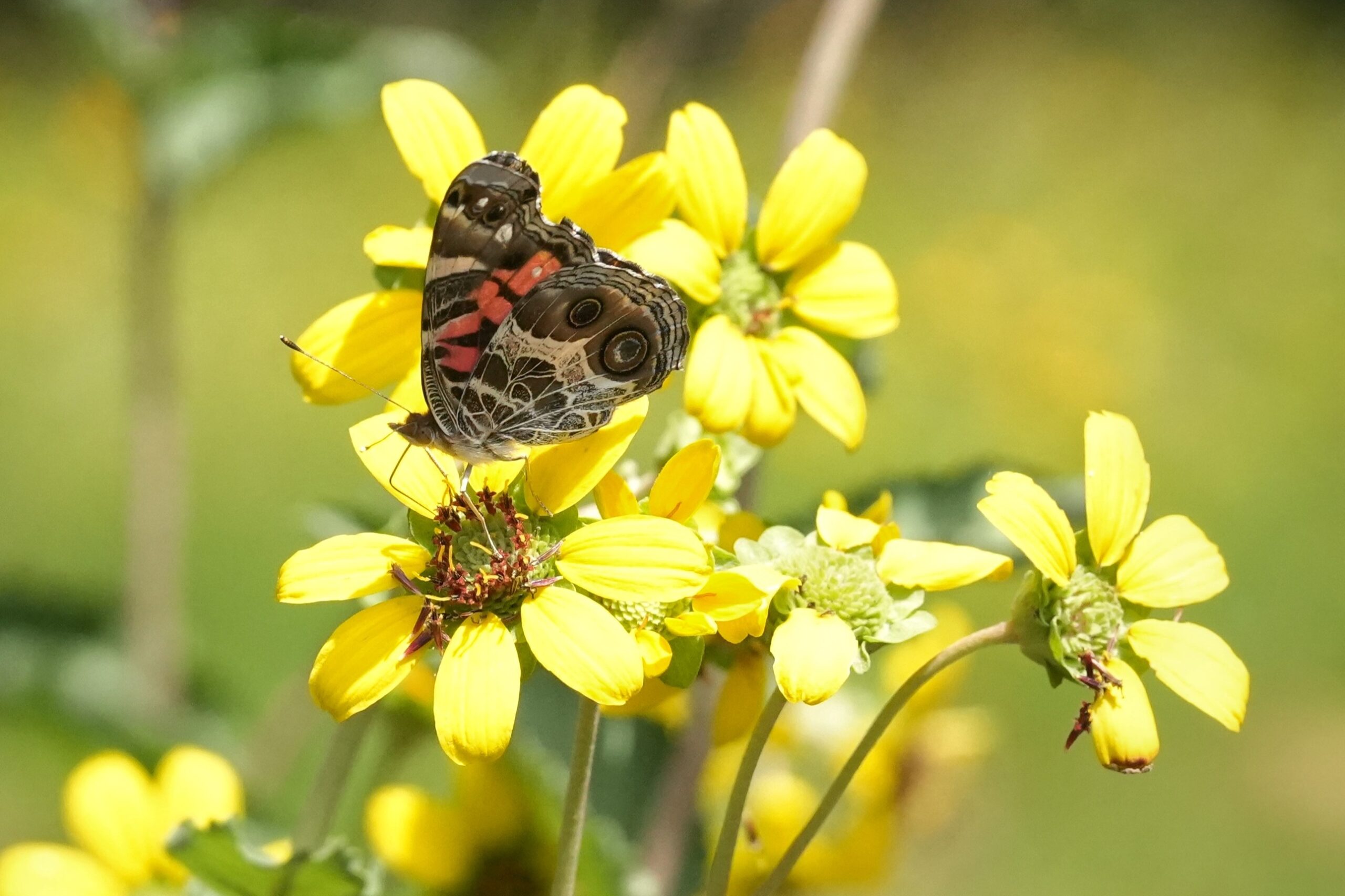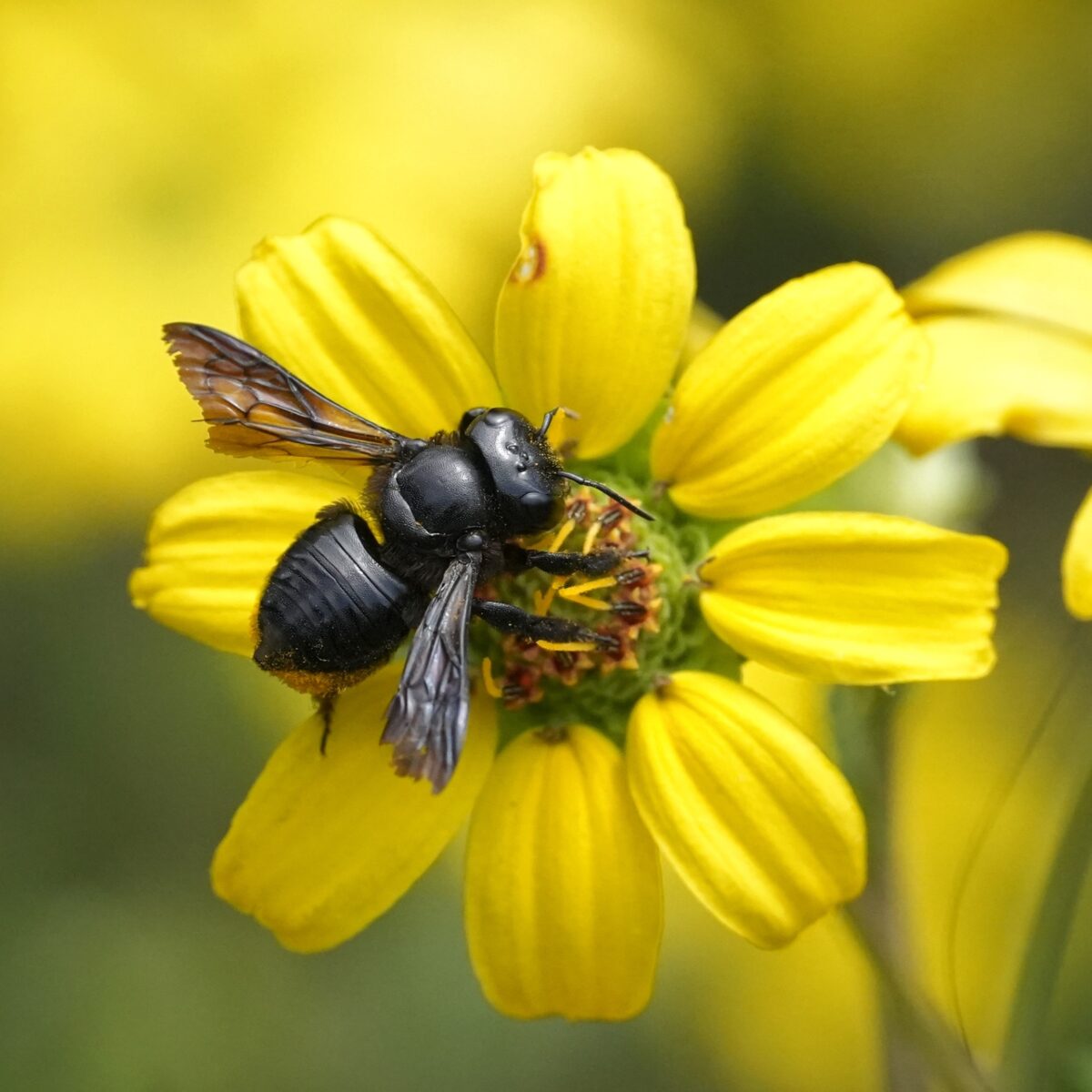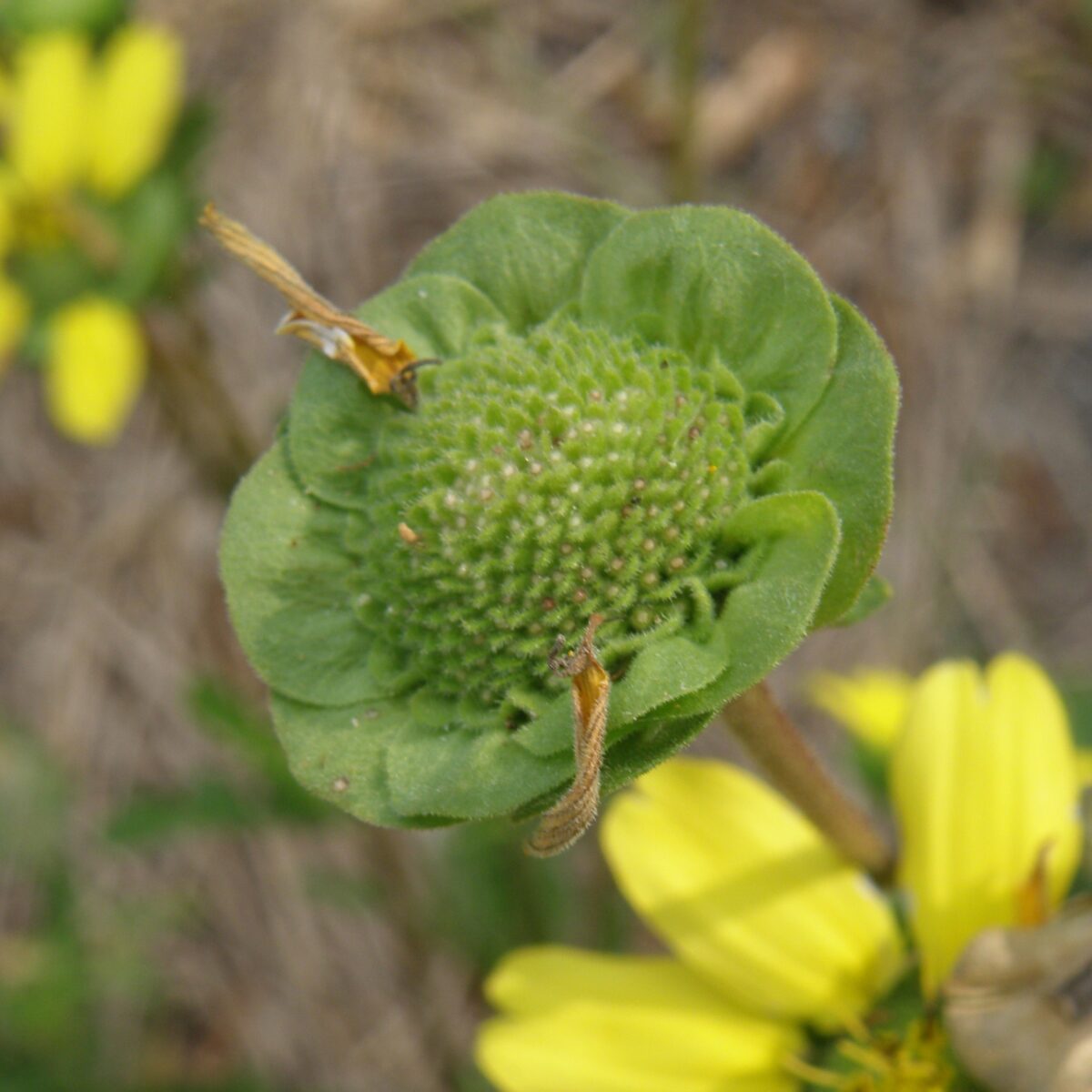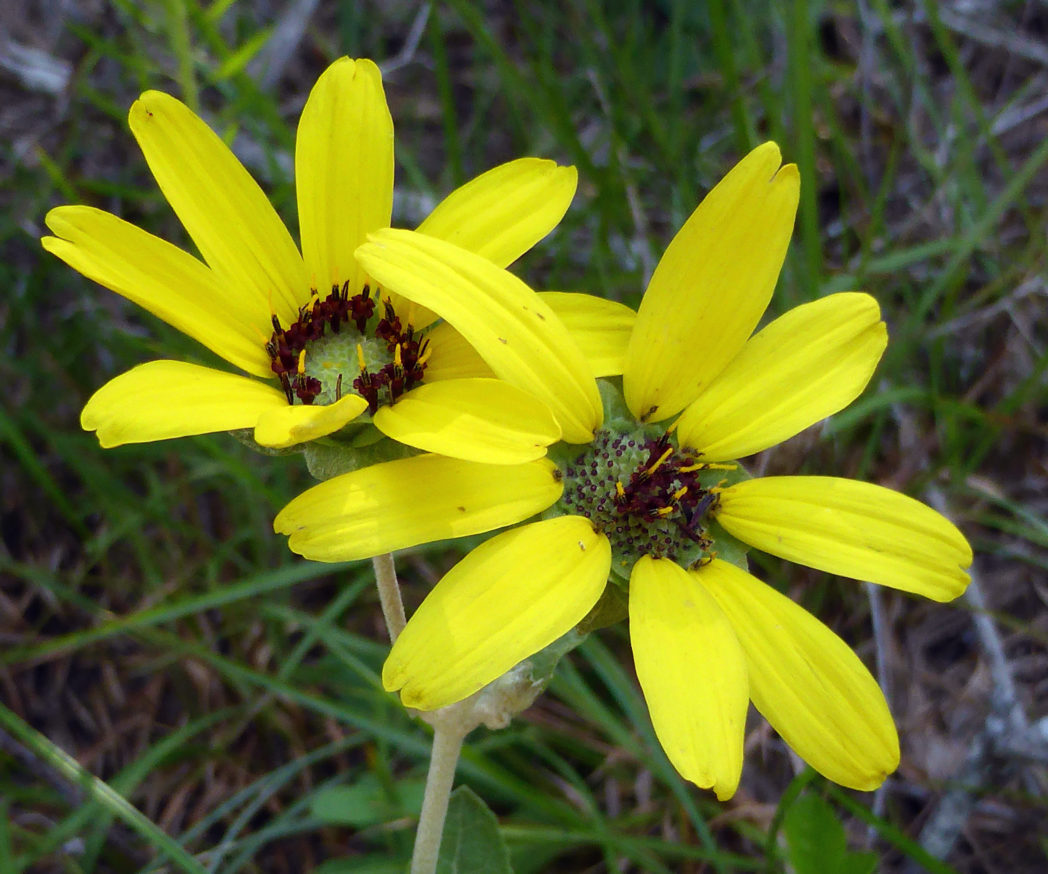Florida greeneyes
Pictured above: Florida greeneyes (Berlandiera subacaulis) with visiting American lady butterfly by Emily Bell. Click on terms for botanical definitions. View post as a PDF.
Florida greeneyes (Berlandiera subacaulis) is a perennial herbaceous wildflower endemic to Florida. It occurs naturally in sandhills, dry pine flatwoods and mixed upland forests, as well as along dry roadsides and in ruderal areas. Its bright blooms typically appear in spring and attract a variety of bees and butterflies.
Florida greeneyes’ flowers are solitary and terminal. They consist of vibrant yellow ray florets, each with a notched tip and “grooved” surface, surrounding a head of greenish-yellow tubular disk florets. When open, they reveal maroon anthers and yellow stigmas. The flowers are held at their base by a cup of bright green overlapping bracts. The plant’s dark green leaves are ovately shaped with crenate margins when young; older leaves may appear more deeply lobed. Leaves are mostly basal and may be petiolate or sessile. Leaf undersides are covered in soft hairs. Stems are short and usually hairy. The taproot is thick and tuberous. Seeds develop in cypselae, which are attached to the bracts and mature into a distinctive, plate-like seedhead. Only ray florets produce seed.
The genus name Berlandiera refers to 19th century naturalist Jean-Louis Berlandier, who collected botanical specimens in Mexico and Texas. The species epithet subacaulis is from the Latin sub, meaning “under,” and acaule, or “stemless.” It refers to the plant’s short stem.
Florida greeneyes (as well as other Berlandiera species) have been informally referred to as “chocolate flowers” because the open disk florets emit a subtle chocolatey fragrance.
Family: Asteraceae (Aster, daisy or composite family)
Native range: Eastern Panhandle, north and central peninsula, Lee and Monroe counties
To see where natural populations of Florida greeneyes have been vouchered, visit florida.plantatlas.usf.edu.
Lifespan: Perennial
Soil: Dry to moderately moist, well-drained sandy, rocky or calcareous soils
Exposure: Full sun to minimal shade
Growth habit: 1–2’ tall when blooming
Propagation: Seed, root division
Florida regions of landscape suitability: North, Central, South
Garden tips: Florida greeneyes is easy to establish in the garden. Its tuberous root, which can be as thick as 12 inches in older plants, makes it very drought tolerant. Seeds can be collected after ray florets drop. Propagation by division is possible but may be difficult, as plants are joined by the thick root. Once established, Florida greeneyes requires little mainteance. It can form large clumps and produce copious blooms, creating a beautiful spring display.
Florida greeneyes is available from nurseries that specialize in Florida native plants. Visit www.PlantRealFlorida.org to find a nursery in your area. Seeds may be available from the Florida Wildflower Growers Cooperative at www.FloridaWildflowers.com.
Learn more about Florida greeneyes from the Florida Native Plant Society and the Institute for Regional Conservation.
For information on other Berlandiera species, see these resources:




